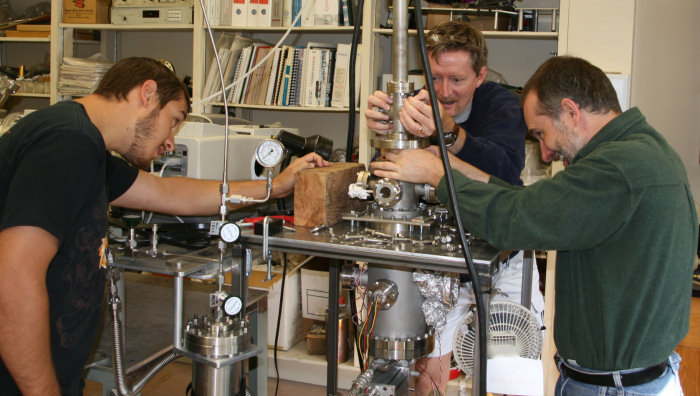
Titan, the largest moon of Saturn, is the only body besides Earth in the solar system to have liquid on its surface. Compared to Earth, the temperatures are much colder (~95 K), meaning that water ice is the bedrock, and the lakes and seas are composed primarily of methane and ethane. Under the leadership of Jennifer Hanley, we have been studying the stability of these liquids in the Astrophysical Materials Laboratory at Northern Arizona University through a combination of laboratory experiments and theoretical modeling. To start, we looked at the freezing point of different mixtures of methane and ethane. This pair of molecules form a eutectic system, where the lowest freezing point of the mixture is below either of the pure species individually. We see that depending on the ratio of methane-to-ethane, different ices form, as seen in the image [below]. Ethane ice (panel a) tends to form in ethane-rich liquids, and since it is more dense than the remaining liquid, it forms at the bottom of the cell. Methane ice (panel c) tends to form in methane-rich liquids, and float. In the middle panel, at the eutectic point, the methane and ethane ice form simultaneously at the top and bottom of the sample. These results have implications for the stability of the lakes and seas on Titan’s surface.